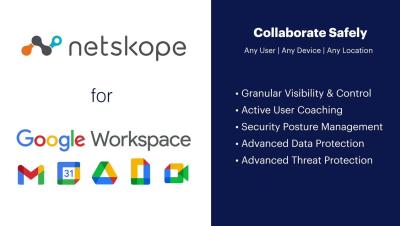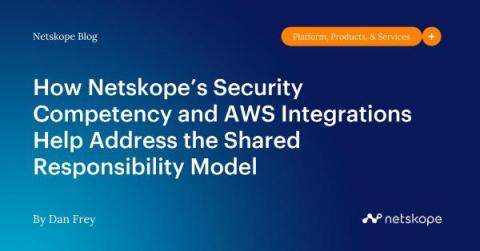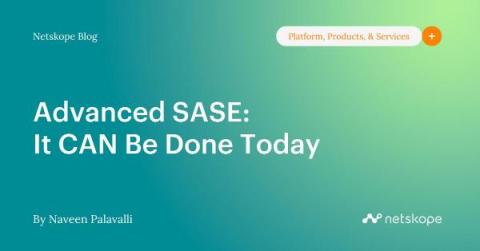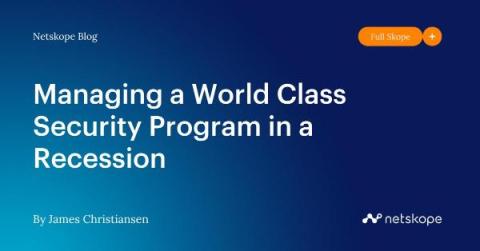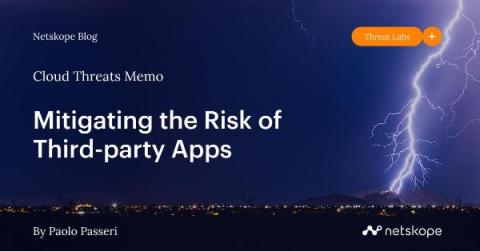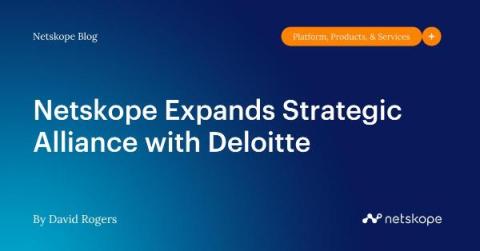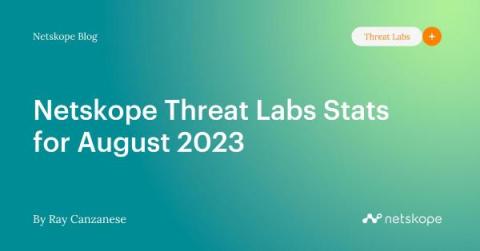Security | Threat Detection | Cyberattacks | DevSecOps | Compliance
Netskope
How Netskope's Security Competency and AWS Integrations Help Address the Shared Responsibility Model
It’s no secret that Amazon Web Services (AWS) continues to grow by leaps and bounds as organizations modernize their IT infrastructure by migrating apps and workloads to the cloud. And due to the AWS shared responsibility model of cloud security, a deep and broad ecosystem of security vendors has also grown up alongside AWS.
Advanced SASE: It CAN Be Done Today
The Gartner® secure access service edge (SASE) framework has generated tremendous interest in the market, spanning from small businesses to large institutions, and appealing to security and networking professionals alike. Netskope is excited to announce the availability of the first secure access service edge (SASE) solution to fully address key advanced use cases demanded by large enterprises.
Managing a World Class Security Program in a Recession
As signs of a global recession continue to linger, many businesses are still tightening their spending across the board. Though cybersecurity remains a critical concern for virtually every type of organization, even security leaders may need to watch their spending—while somehow still keeping pace with the latest threats and risk exposures.
Demo - Train Your Own Classifier
Cloud Threats Memo: Mitigating the Risk of Third-party Apps
The use of third-party apps (also known as “connected apps”, “cloud to cloud apps”, “OAuth apps”) are apps developed by external and internal developers or organizations that can interact with and extend the functionality of a primary SaaS App. These are growing exponentially across organizations.
New Python NodeStealer Goes Beyond Facebook Credentials, Now Stealing All Browser Cookies and Login Credentials
Netskope Threat Labs is tracking a campaign that uses malicious Python scripts to steal Facebook users’ credentials and browser data. This campaign targets Facebook business accounts with bogus Facebook messages with a malicious file attached. The attacks are reaching victims mainly in Southern Europe and North America across different segments, led by the manufacturing services and technology sectors.
Netskope Expands Strategic Alliance with Deloitte
As enterprises continue to re-engineer their infrastructure to enable secure productivity for workforces, wherever they may be, Netskope is deepening its alliances with global system integrators who have the experience and worldwide presence to guide those digital transformation projects.
Context Defines Next Gen SWG
Netskope Threat Labs Stats for August 2023
Netskope Threat Labs publishes a monthly summary blog post of the top threats we are tracking on the Netskope platform. The purpose of this post is to provide strategic, actionable intelligence on active threats against enterprise users worldwide.


